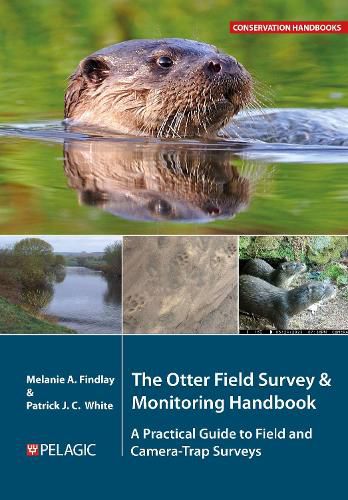Readings Newsletter
Become a Readings Member to make your shopping experience even easier.
Sign in or sign up for free!
You’re not far away from qualifying for FREE standard shipping within Australia
You’ve qualified for FREE standard shipping within Australia
The cart is loading…






This book is the comprehensive guide for ecologists undertaking site surveys for Eurasian otters. It describes how to carry out initial field-sign surveys, select sites for camera-trapping, deploy camera-traps and interpret data. The methods described are underpinned by years of research.
Field-signs have historically been used as the main approach for surveying otters. This book illustrates what to look for and where to find different types of field-sign. It examines whether field-signs are a good predictor of otter activity and describes the limitations of such surveys. Optimal deployment of camera-traps to monitor otter dens (holts) is presented, together with an account of what type of behaviour and activity levels can be expected when they are used for birthing (natal holts), cub-rearing and casual resting.
Illustrations, camera-trap images and descriptions of the animals' behaviour bring the process to life, supported by the latest scientific evidence for application in site surveys and licence applications.
A practical guide to field-sign surveys in freshwater and coastal habitats, how to search for holts and what field-signs can be used to identify otter presence.
When and how to deploy camera-traps at potential holts; optimising set-up for good data quality, and understanding constraints of the equipment, the site and the species.
Organising camera-trap data to quantify activity patterns.
Interpretation of camera-trap footage; identification of males and females, resting activity and natal activity.
$9.00 standard shipping within Australia
FREE standard shipping within Australia for orders over $100.00
Express & International shipping calculated at checkout
This book is the comprehensive guide for ecologists undertaking site surveys for Eurasian otters. It describes how to carry out initial field-sign surveys, select sites for camera-trapping, deploy camera-traps and interpret data. The methods described are underpinned by years of research.
Field-signs have historically been used as the main approach for surveying otters. This book illustrates what to look for and where to find different types of field-sign. It examines whether field-signs are a good predictor of otter activity and describes the limitations of such surveys. Optimal deployment of camera-traps to monitor otter dens (holts) is presented, together with an account of what type of behaviour and activity levels can be expected when they are used for birthing (natal holts), cub-rearing and casual resting.
Illustrations, camera-trap images and descriptions of the animals' behaviour bring the process to life, supported by the latest scientific evidence for application in site surveys and licence applications.
A practical guide to field-sign surveys in freshwater and coastal habitats, how to search for holts and what field-signs can be used to identify otter presence.
When and how to deploy camera-traps at potential holts; optimising set-up for good data quality, and understanding constraints of the equipment, the site and the species.
Organising camera-trap data to quantify activity patterns.
Interpretation of camera-trap footage; identification of males and females, resting activity and natal activity.